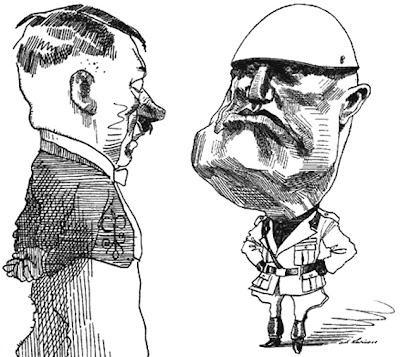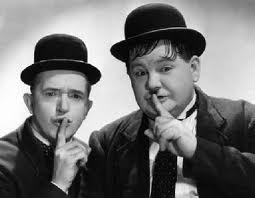Me, I prefer to eat what the brick throwing radicals, and nihilist philosophers in Paris eat. We sophisticates prefer the classical French omelette that I'm going to discuss here. Those omelettes don't brown on the bottom, not even slightly. They're never made with milk, and they're not uniform in texture. They're not even completely cooked. Here's how they work:
It's best to start with a three egg omelette that you make for yourself. If two are eating, then make two separate omelettes, one after the other. Don't make one giant omelette, then split it in two.
I use a good quality 7 or 8 inch (across the bottom) non-stick omelette pan. One famous writer prefers cheap non-stick pans because they heat up faster, but the better pan feels good, and is more fun to use. Anyway, three eggs work perfectly in a pan this size.
Break three ROOM TEMPERATURE eggs and empty them into a bowl. Add a tablespoon of water (not milk), a little melted butter, and some salt and pepper. DON'T SKIP THE WATER. Whip the eggs vigorously with a fork. IMPORTANT: don't over whip them; stop BEFORE the whites and yolks are completely mixed!
Put a pat of butter in the pan, turn the heat to medium high, and roll the butter around so it also coats the bottom and sides of the pan. Let the butter sizzle for a moment or two and, when the sizzling diminishes a little, then pour in the eggs. Turn the heat down a little.
Let the eggs sit for 6 seconds then lift the pan a little above the burner and shake it vigorously back and forth while prodding the sides and middle with a rubber spatula. If the pan smokes then lift it a little higher off the flame. Incidentally, by prodding I mean that you're opening channels for the uncooked, liquid parts of the egg to make contact with the pan. You're also separating the eggs from the pan so they slide easily. Watch the way Jacques Pepin and Julia Childs shake the eggs in the videos below!
The egg will cook fast. At the midway point, when half the omelette is still somewhat creamy, quickly add whatever PRE-PREPARED filling you have. All the filling should be on the half of the omelette that's farthest from you. Remember, LESS IS MORE! The main taste you're after is that of egg and butter. The filling is just an accent. TOO MUCH FILLING WILL RUIN AN OMELETTE.
BTW: For filling a first time classic omelette I would use only shredded fatty white cheese, mixed with a little a little brandy or sherry, a little salt, and some chopped chives. Put all these fillings in an easy to find bowl, ready to pour immediately when needed. Stopping to locate anything while you're cooking could result in overcooked eggs.
Now, with the filling poured onto the egg, and the egg still still creamy in parts, you'll want to fold it over and move it onto a plate. It'll continue to cook by itself outside of the pan. When its on the plate and ready to eat, the center will be creamy like the example in the picture above.
But I'm getting ahead of myself. It's time to describe in detail how to fold and de-pan. Aaaargh, this is hard to convey with words....come to think of it, just watch the videos below to see how this works. It's not hard, and if you goof it up, the eggs will probably still taste okay.
Finally, with the omelette on the plate, you can add a blush of butter to the top so the chopped, leafy spices and salt you're about to put on won't fall off. Which spices? According to Pepin they are: chives, basil, parsley, dill, tarragon, and chervil leaves.
My supermarket doesn't carry chervil, so I can't comment on that. Tarragon is expensive. I use it, but it doesn't add much. Dill and parsley work great. In my opinion the most important of Pepin's spices are chives and basil. Fresh chives come in a plastic carton that sells for $1.80 at Trader Joe's. They have a subtle flavor, so chop enough to make an impact.
I think that's it...did I leave anything out?
Oh, yes..... It's a good idea to have toast and jam, or potatoes, or salad, or white wine, or whatever you intend to take with the omelette, already made or cooked and ready to consume when the omelette is done. You'll want to eat the omelette as soon as it's delivered to the plate!
I'll end with some troubleshooting tips:
If the finished omelette is disappointing, you might not have used enough salt. Or maybe you require Tabasco sauce, or maybe you put in too much filling and the taste of that overwhelmed the omelette. Maybe you used milk instead of water, and that made the eggs leathery. Maybe you used one or two eggs instead of three, and so starved the pan. Maybe you failed to accompany the omelette with a good side dish, or with wine or a good coffee. Omelettes don't taste right all by themselves. They need accompaniment. Maybe you substituted some healthy oil for the butter. Maybe you used...Aargh!... margarine. I hate to say it but that kind of chintzing is a mistake. To enter The Land of Deliciousness you must be willing to risk a heart attack.
I tried a number of internet recipes and in the end I preferred Pepin's way, only with the addition of brandy and a little butter mixed with the raw egg. The only experiment I have yet to try is adding a separately made soft boiled egg over the finished and depanned omelette. That's because I'm curious to see if I can get more "eggy" flavor into the omellete. Have you ever noticed that soft boiled eggs have an intense egg flavor that no other egg dish has? Wouldn't it be great if an omelette could have flavor that's equally intense?
The two videos I promised:



















































